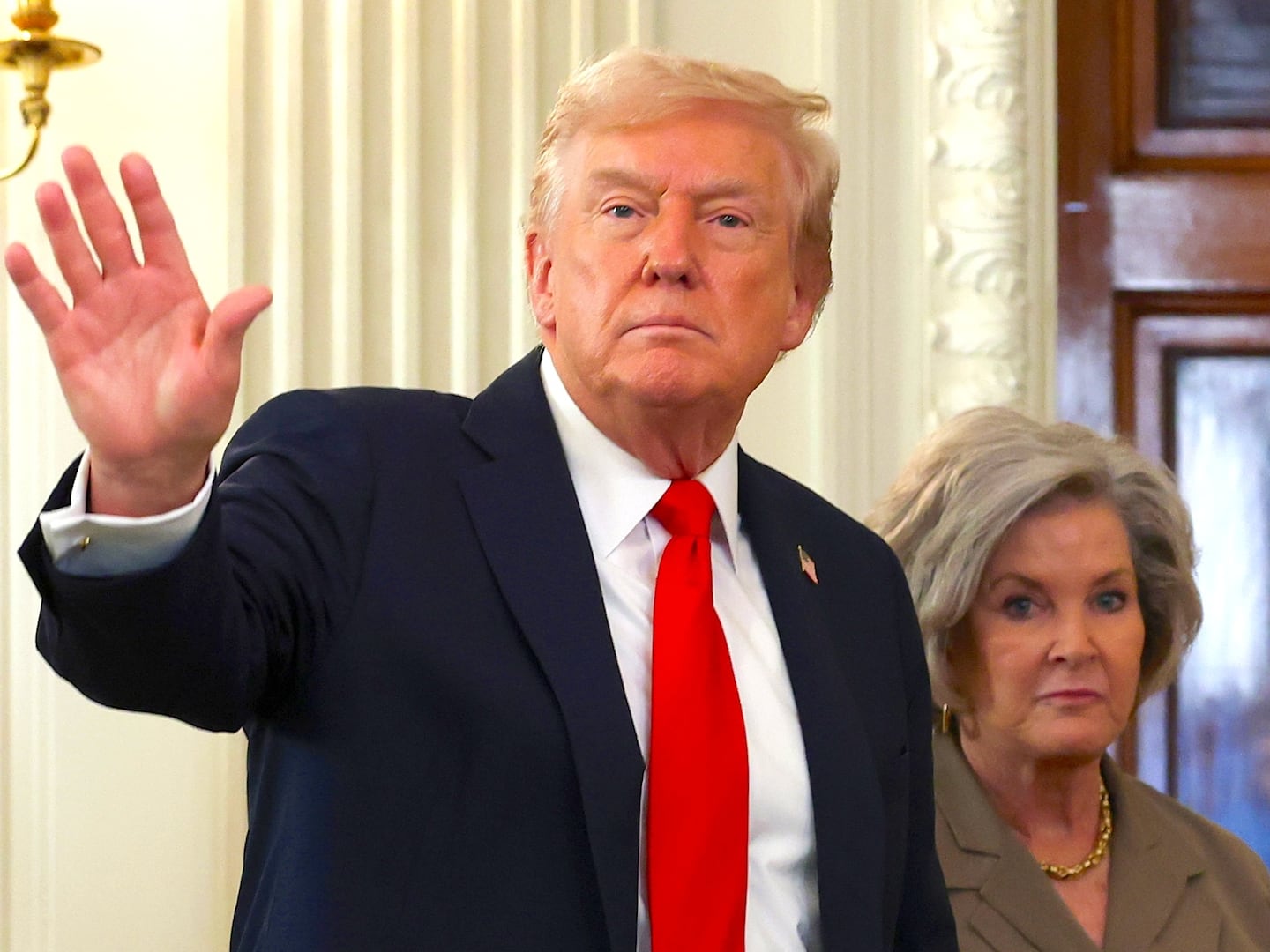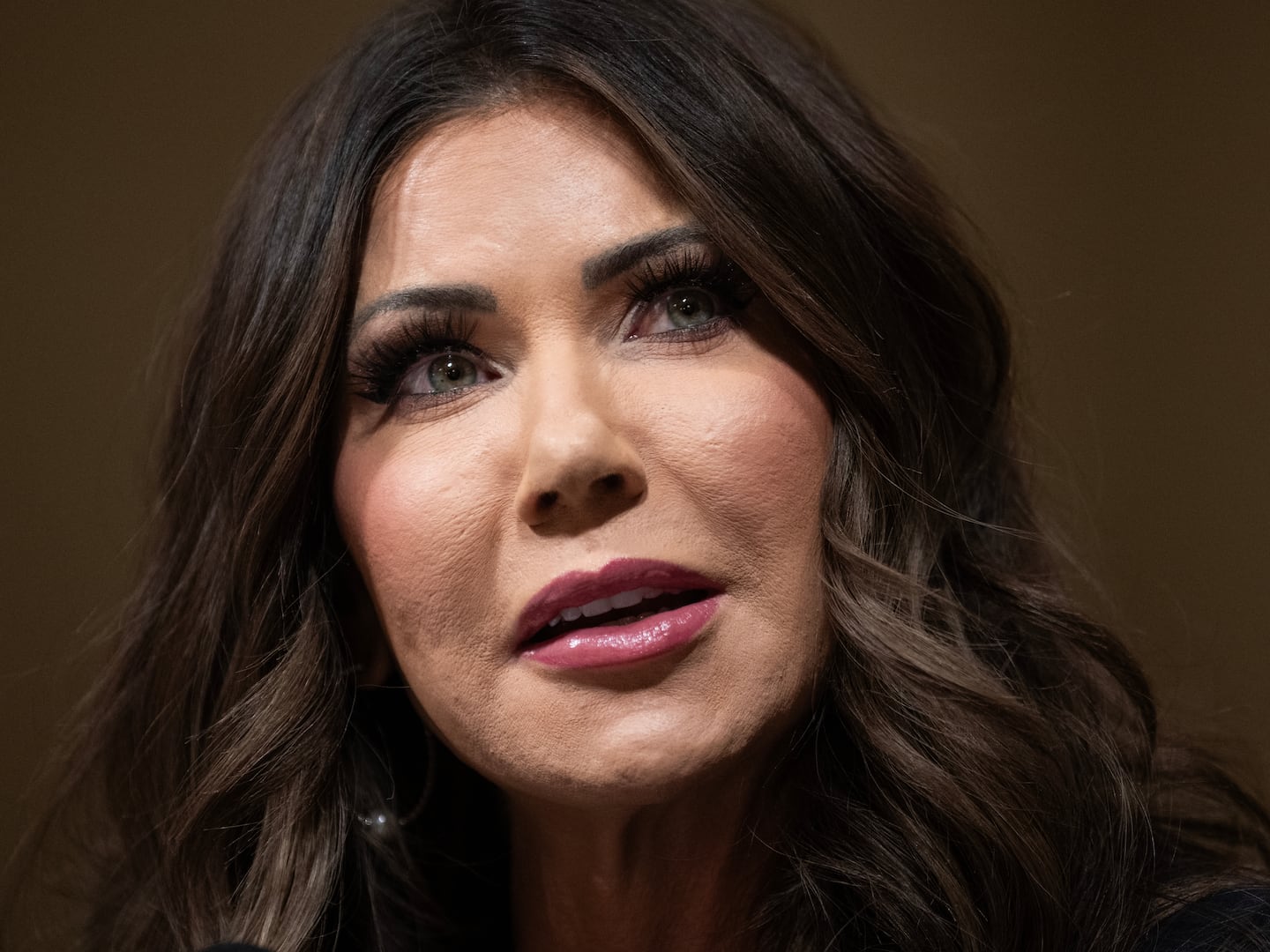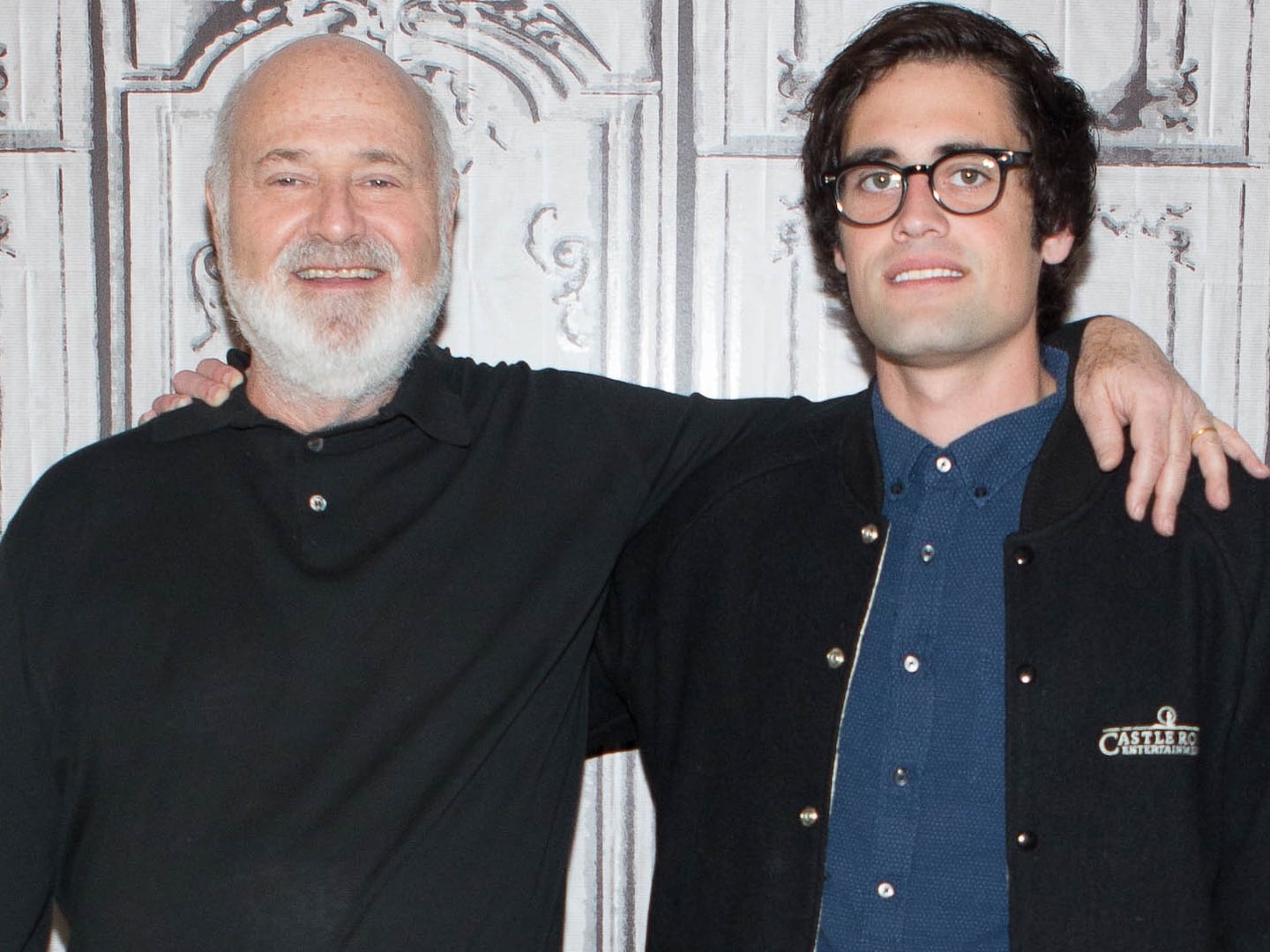It was 12 years ago, and I was clinging to my son, Shibli, then 3 months old, outside the city of Mecca. I was caught in the kind of frightening crush that claimed the lives of at least 700 on the Muslim pilgrimage of the hajj Thursday, injuring at least 800 others, in a bloody, tangled mess of humanity slain.
A pilgrim with my parents and preteen niece and nephew, I carried Shibli against my chest in a Baby Bjorn carrier as we fought for our lives in a stream of pilgrims seeking refuge in the tent city of Mina, outside Mecca—the same area where Thursday’s tragedy occurred. We struggled through dirty water, trash, and sleeping pilgrims beneath a bridge named for King Khaled Ibn Abdul Aziz, the wealthy heir who exported Saudi Arabia’s extremist Wahhabi and Salafi doctrine to the world, indoctrinating Muslims to radical Islam in the modern day.
Swept in a press of desperate pilgrims, I wondered whether we would get out alive.
In the end we did, but to me, as a hajjan, or female Muslim who has completed the hajj, our death-defying experience left me with a spiritual epiphany of a different kind: Under the control of the billionaire rulers of Saudi theocracy, the holy pilgrimage of the hajj has become a lethal symbol of the Saudi house of greed.
GALLERY: Saudi Hajj Pilgrimage Stampede kills Hundreds (PHOTOS)

From the start of my return from the pilgrimage, I haven’t used the word hajjan before my name, as I could do, to mark my religious credentials. I believe, in fact, that Muslims should boycott the hajj and the government of Saudi Arabia until the ruling party, which touts itself as “custodian” of the two holy mosques in the cities of Mecca and Medina, steps down and brings democracy, civil society, human rights—including women’s rights—and a peaceful and tolerant interpretation of Islam to its people and the world.
As it stands, the ruling despots of Saudi Arabia exploit the pilgrimage as one of the five “pillars” of Islam to win a pass on scrutiny of policies that, for example, left a young man, Ali Mohammed al-Nimr, 21, sentenced to crucifixion and beheading for alleged political crimes against the state. He is a member of the minority Shia sect of Islam, marginalized in a country dominated by the majority Sunni sect, which deems minority sects “apostates.”
Paradoxically, the government of Saudi Arabia was just named head of a panel on the U.N. Human Rights Council.
Hopes for reform in Saudi aren’t just pie in the sky dreaming. The “Hope Pope,” or Pope Francis, who is leading his faithful in a U.S. tour with a message of love—a stark and successful departure from the Catholic Church of the Inquisition, which murdered scientists, philosophers, monks, and laypeople who disagreed with its strict doctrine—tells us that grand theological change is possible. (To pay my respects to history, when I went to Rome some years after my hajj, I went on a self-styled “heretics tour” of the coliseums, public squares, and other sites where brave souls had lost their lives for critical thinking.)
To me, Thursday’s horrific deaths—which Khaled al-Faisal, a Saudi “prince” and head of the Central Hajj Committee, callously blamed on “some pilgrims from African nationalities,” and other reports linked to a Saudi decision to block a road for VIPs—testify to some of the worst that happens to humanity when faith meets avarice.I wrote a book with the title Standing Alone in Mecca not because I was delusional. It is a metaphor for my lone spiritual pilgrimage, in conflict with the chandeliers, marble, and air-conditioned tents that make up the multibillion-dollar business the Saudi ruling family has built with the Saudi Binladin Group, with callous disregard to human life. The Saudi government has put in place a grandiose construction scheme for Mecca and Medina, the two holy cites of Islam, bulldozing historic relics and erecting new edifices to “faith,” complete with a luxury 44-story hotel in Mecca. The director of the U.K.-based Islamic Heritage Research Foundation, Irfan Al-Alawi, now calls the city “Mecca-hattan.”
Earlier this month, on the anniversary of the Sept. 11, 2001, attacks, orchestrated by the namesake of the bin Laden family, Osama bin Laden, the heavens metaphorically opened with a bolt of lightning striking a crane operated by the Saudi Binladin Group. The crane fell to the marbled floors of the palatial mosque in Mecca, killing an estimated 118 pilgrims and injuring about 394 others. Osama’s father, Muhammad bin Laden, founded the Saudi Binladin Group in the 1950s in Jeddah and spread his wealth among his clan of dozens of sons and daughters from multiple marriages.
On our pilgrimage, there were many occasions when I thought we risked death in the crush of a stampede, but the worst was in Mina, where the pilgrims died Thursday.
Back in 2003, the Saudi government even warned about the dangers in a health brochure: “Dear Pilgrims, Laying under bridges and setting on the footpaths is an uncivilized behaviours, and doing so causes you many risks. so do not exposure yourself for risks.” Another one of the Saudi government’s tips seemed to defy reality: “Crowding is an important factor for transmission of meningitis, try to avoid crowded areas.” Trying to avoid crowded areas on the hajj was like trying to stay dry in the ocean.
In that one swift moment of the stampede in which my family and I found ourselves, the dangers became apparent. The crowd started to crush us, pressing my son and me toward a wall of squat buildings on my right. Just over 5 feet tall, I had Shibli dangling at the level of the other pilgrims’ backs. I worked hard to make sure he got air, but I was afraid he’d suffocate if the crowds closed in even tighter. Trust me, my mother, nearby, was thinking: I told you so. I considered escaping into the entryway of a smelly men’s restroom but figured I would just be flattened against its closed doors. There were slippers everywhere. People had lost them and been unable to retrieve them in the crowd.
Our guide, Muhammad Alshareef, founder of the ultraconservative AlMaghrib Institute of Islam in Canada and the U.S., warned us: “No matter what, don’t stop to pick up lost shoes. Let them go.” Otherwise we risked being trampled in the press of the crowd. Stopping for shoes was an invitation to death.
Shibli squirmed on my chest. It was increasingly hot, and I jabbed my hand into the crowd like a linebacker, trying to protect him.
Women and men yelled at me in Arabic. “They’re saying, ‘Put your baby up!’” Alshareef’s wife translated.
“How?” I exclaimed.
Suddenly, a young Egyptian-American man broke stride beside us.
“He is my friend,” Alshareef’s wife said. “He can carry the baby!”
I hesitated. I didn’t know this man. I could lose my baby in this crowd. I didn’t even have Shibli wearing his ID, “Card Number 34” in our tour group, because it was a choking hazard. I had a badly photocopied map of Mina into my pocket with phone numbers beside Arabic script I couldn’t read. The only instructions in English: “In case of lost,” we had to look for Mina Square 49 under the King Khaled Bridge or call a “Mr. Arafat” on his mobile phone.
It was one of those perilous moments that mothers have faced since the beginning of time. I chose to take the calculated risk.
I handed Shibli to the young man and tried to stay close beside him. We navigated gingerly but forcefully through the crowds. Shibli rested on the man’s shoulder. Finally, we took a turn out of the crush. We proceeded quickly to our tent, where the young man gave me back my baby.
We tumbled into the women’s tent, where a fellow pilgrim from Mechanicsburg, Pa., wept from the frightening experience.
Internally, I responded with a very sober realization. The Saudi family has exploited the sacred ritual of the hajj to wow Muslims with an over-the-top marble and chandelier experience while exposing us to dangerous risks, including their antiquated theology. In Mina, we got a lecture. “When you greet a Muslim,” the crackle of the cleric’s voice said, “say ‘As-salaam alaykum.’” I knew that. It meant, “Peace be upon you,” and it is often used as evidence of what a peace-loving religion Islam is meant to be. “When you greet a kafir,” he continued, “do not say, ‘As-salaam alaykum.’”
“What?” I exclaimed to my mother. “That’s ridiculous. We don’t wish peace upon non-Muslims?”
Kafir mean “non-believer,” and I resented such judgmental distinctions. Sure enough, my pocket-size Saudi prayer book had a special greeting for non-Muslims. Prayer No. 123: “Returning a greeting to a kafir.” It stipulated that the greeting should be: “And upon you.” The greeting returned to a Muslim: “And peace be upon you.”
The distinction disgusted me. My mother read my mind and murmured to me: “These are the things that turn you off.”
In the men’s tent, my father was challenging this teaching. Our imam, Sheikh Muhammad Nur Abdullah, then president of the Islamic Society of North America and leader of a mosque in St. Louis, didn’t agree with it, either. “Greet everyone,” he told my father, “with ‘As-salaam alaykum.’”
That relieved me, and it reminded me again that Islam isn’t practiced one singular way—no matter how much any one Islamic ideology insists its path has a monopoly on virtue. Muslims have many paths to Mecca, and we need to get off the Saudi path.
The lethal combination of big money with sacred ritual makes Thursday’s stampede and the crane disaster a symbolic reminder of how unfettered and dangerous Saudi excess—both theologically and physically—has become.
The Saudis have a legacy of deaths on the hajj, marked by deadly fires and stampedes. In 1975, there was a fire in a tent colony outside Mecca that killed thousands. In 1987 the Saudi government gunned down about 400 unarmed Iranian pilgrims protesting its rule. In 1990, an estimated 1,426 pilgrims were crushed to death in a stampede in a pedestrian tunnel leading from Mecca to Arafat. In 1994, 271 pilgrims were trampled in a stampede. In 1997, 343 pilgrims burned to death and another 1,500 were injured in a blaze that roared through 70,000 tents outside Mecca. The air was left thick with the smell of smoke, and burned-out buses, charred water bottles, and other blackened debris littered the ground. In 2005, another 250 pilgrims were killed in a stampede in Mina, and in 2006, an estimated 360 pilgrims were killed, again in Mina.
In all of these incidents, spokesmen for the government blamed “divine” predetermination.
Unfortunately, the Saudis put forward a theological directive that to die in Mecca during the hajj is a “blessing,” and people will sometimes abandon personal safety for faith, creating dangerous situations for those like myself who aren’t particularly interested in dying. As a new mother on the pilgrimage, I knew that I didn’t want to lose my son to human caprice after I had overcome so much to bring him into the world. But I had chosen to take the risk, over the more sensible protests of my mother and friends.
From beginning to end, the Muslim pilgrimage is dangerous madness. It was madness near the Ka’bah in Mecca, as pilgrims threw themselves against its walls to try to kiss the stone. The situation at the Ka’bah reminded me of the time I wiggled my way into the mosh pit at a No Doubt concert. The hajj is a like a spiritual mosh pit.
The frenzy was not so different from the rush that had filled the air when I watched Buddhist pilgrims stampede the stairs of the Ki monastery in the Himalayan mountains of India just to set their eyes on a holy mandala that was part of a holy pilgrimage led by the Dalai Lama. An elderly Nepali Sherpa there died in my arms when he was caught in the crush.
When I closed my eyes on the hajj, I could see the dust storm kicked up by 200 naked Hindu yogis, called Naga babas, as they bolted for their holy ritual bathing in the Ganges River during the Maha Kumbh Mela in India. It was the same devotion that sent Jews and Christians to their pilgrimage sites. But there is something particularly dangerous about the lethal combination in Saudi Arabia of contained spaces and millions of pilgrims.
Thursday’s tragedy occurred as Muslim pilgrims in Mina completed another antiquated and dangerous tradition of “stoning the devil,” in a ritual called ramy. The devil is symbolized in three stone pillars: Al-Jamara al-Kubra is the tallest pillar, al-Jamara al-Wusta is the middle pillar, and al-Jamara al-Sughra is the smallest pillar.
The prophet Muhammad said that when the prophet Abraham wanted to do his rites of hajj, Satan blocked his way. Abraham threw seven pebbles at him, and Satan sank into the ground. Abraham proceeded to the second pillar and threw another seven pebbles at Satan, and again Satan disappeared into the ground. Blocked yet again at the third pillar, Abraham again threw seven pebbles.
But the devil wasn’t the only thing to fear here. In 1998, a stampede in the plain of Mina killed 118 pilgrims as large crowds assembled near a bridge on their way to the devil-stoning ritual. When I was on the hajj, I went against the devil. This time, I listened to my mother and left Shibli at the tent with the women there.
For this ritual, my family climbed a ramp onto a wide, two-level, roofless pedestrian walkway, inside which sat the three tall stone pillars. I saw giant phallic symbols rising into the sky. Trying to dodge getting hit by an errant stone flung from the other side, I threw each stone not just as a representation of my jihad, or personal struggle, against “evil” but against something much deeper.
The birth of Islam in the seventh century was supposed to mark the end of the period of Jahiliya, or ignorance. I threw each stone as a blow against the house of greed, indulgence, caprice, intolerance, danger, and jahiliya, exported to the world from the country on whose ground I stood.






